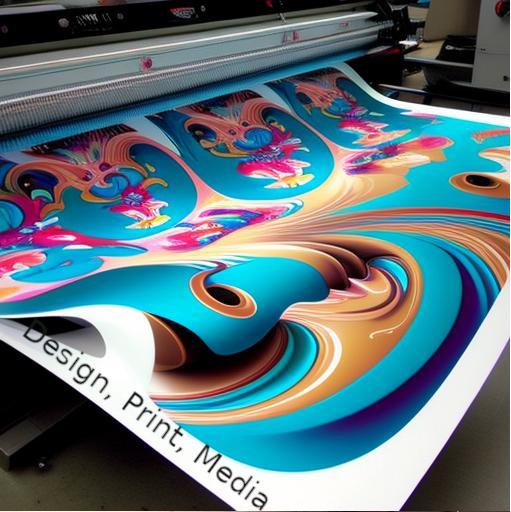


In the fast-paced world of business and personal branding, the importance of visually appealing design and high-quality print services cannot be overstated. Whether you're creating business cards, promotional materials, or custom merchandise, the way your design is executed and printed plays a crucial role in leaving a lasting impression. This comprehensive guide will provide you with useful tips to navigate the intricate realm of design and print services, helping you achieve professional and eye-catching results.
Understand Your Purpose:
Before diving into the design process, clearly define the purpose of your project. Whether it's a business card, brochure, or banner, understanding the intended message and audience will guide your design choices. Consider the tone, color scheme, and imagery that align with your brand or personal style.
Choose the Right Design Software:
Invest time in mastering design software that suits your needs. Popular tools like Adobe Creative Cloud (Illustrator, Photoshop, InDesign) and Canva offer a range of features for both beginners and advanced users. Learning the basics of these tools will empower you to create professional-looking designs.
Embrace Simplicity:
In the world of design, simplicity often reigns supreme. Avoid clutter and overwhelming details. Focus on conveying your message clearly and concisely. A clean and well-organized design is more likely to capture attention and leave a positive impression.
High-Quality Imagery:
Use high-resolution images to ensure crisp and clear prints. Blurry or pixelated images can detract from the overall professionalism of your design. Invest in quality stock photos or hire a professional photographer if needed. Consider the visual hierarchy, placing the most important elements prominently.
Color Matters:
Understand the psychology of colors and choose a palette that resonates with your brand or message. Consistency in color across your designs helps build brand recognition. Ensure that your chosen color scheme is printer-friendly, considering CMYK values for accurate reproduction.
Typography Tips:
Select fonts that are easy to read and align with your brand personality. Avoid using too many fonts in a single design, as it can create a chaotic appearance. Pay attention to font size, line spacing, and hierarchy to enhance readability.
Print-Friendly File Formats:
When preparing your print design, use industry-standard file formats such as PDF or TIFF. Ensure that your files are set to the appropriate resolution (300 DPI) and include bleed if necessary. This will guarantee that your prints come out exactly as intended.
Paper Quality and Finishing Options:
Choose the right paper stock for your project. Different finishes, such as matte or gloss, can impact the final look and feel. Consider additional finishing options like embossing, foiling, or die-cutting to add a touch of luxury to your prints.
Proofread Thoroughly:
Errors in your design can be costly and diminish your credibility. Proofread your content multiple times, checking for typos, grammatical errors, and design inconsistencies. It's also wise to get a fresh set of eyes on your design before sending it to print.
Test Prints:
Before committing to a large print run, order a test print to evaluate color accuracy and overall quality. This allows you to make any necessary adjustments before producing a larger quantity.
Print service providers are companies or organizations that offer printing services for a wide range of products, including:
Business cards: Printed cards that typically include an individual's name, company, and contact information.
Brochures: Printed materials that provide information about a company, organization, or product, often used for marketing or promotional purposes.
Flyers: Printed materials used for advertising or promotion, often distributed in public places such as bulletin boards or storefronts.
Posters: Printed materials used for advertising or promoting events or products, often displayed in public spaces such as bus stops, train stations, or on billboards.
Banners: Large printed materials used for outdoor advertising or promotion, often hung on buildings or other structures.
Signage: Printed materials used for directional or informational purposes, such as wayfinding signs in public spaces or storefront signs for businesses.
Print service providers may also offer specialized printing services such as customized labels, packaging materials, or large-format printing for trade show displays or other marketing materials.
Print media services refer to traditional media outlets that distribute information in printed form, such as newspapers, magazines, and books. Some common examples of print media services include:
Newspapers: Daily, weekly, or monthly publications that provide news, feature articles, and commentary on current events.
Magazines: Periodical publications that cover a specific topic or area of interest, such as fashion, technology, or sports.
Books: Printed works that provide in-depth information on a particular topic or tell a story, often written by a single author.
Direct mail: Printed materials that are sent directly to potential customers or clients, such as flyers, brochures, or catalogs.
Catalogs: Printed materials that showcase a company's products or services, often used for mail-order sales.
Flyers and posters: Printed materials used for advertising or promotion, often distributed in public places such as bulletin boards or storefronts.
Print media services provide a range of information and promotional materials to consumers and businesses, and continue to be an important part of the media landscape despite the rise of digital media.
Design is the process of creating or planning something with the intention of solving a problem or achieving a specific goal. In the context of visual arts, design often refers to the creation of aesthetically pleasing and functional visual products, such as graphic design, product design, or interior design.
Media design, also known as communication design, is a subfield of design that focuses on the creation of visual content for various media, including print, digital, and multimedia platforms. Media designers may create visual elements for advertisements, websites, video games, films, or other media outlets. Their work may involve graphic design, animation, web design, user interface design, or other disciplines.
Media design involves a combination of creative and technical skills, including visual communication, typography, color theory, user experience design, and digital media production. Media designers must also have a deep understanding of the media landscape and the target audience for their designs.
Design and media design are important fields that play a crucial role in creating visually appealing and effective products for a wide range of industries and applications.
There are many innovations in the fields of print media services and digital design, including:
3D Printing: 3D printing technology has revolutionized the printing industry by enabling the production of three-dimensional objects from digital files. This technology is increasingly being used in fields such as product design, architecture, and engineering.
Interactive Print: Interactive print uses augmented reality technology to create interactive experiences with printed materials. This can include embedding videos or animations within printed materials or using mobile devices to access additional content.
Variable Data Printing: Variable data printing allows for the creation of personalized print materials, such as direct mail pieces or marketing materials. This technology uses data and automation to create customized content for each recipient.
Artificial Intelligence: AI is being increasingly used in the fields of print media services and digital design to automate tasks such as image recognition, data analysis, and content creation.
Virtual and Augmented Reality: VR and AR are technologies that create immersive experiences for users. These technologies are being used in fields such as product design, architecture, and marketing to create interactive experiences and visualizations.
User Experience Design: User experience design (UX) is a field that focuses on designing digital products and services that are user-friendly and easy to use. This involves understanding user needs and behavior and designing products that meet those needs.
These innovations are changing the way that print media services and digital design are produced and consumed, and are likely to continue to have a significant impact on these industries in the future.
Mastering design and print services involves a combination of creativity, technical knowledge, and attention to detail. By following these tips, you'll be well-equipped to create visually stunning designs and ensure that your prints leave a lasting impression. Remember, the intersection of thoughtful design and quality printing is where your vision truly comes to life.

We use cookies
We use cookies and other tracking technologies to improve your browsing experience on our website, to show you personalized content and targeted ads, to analyze our website traffic, and to understand where our visitors are coming from. Privacy Policy.